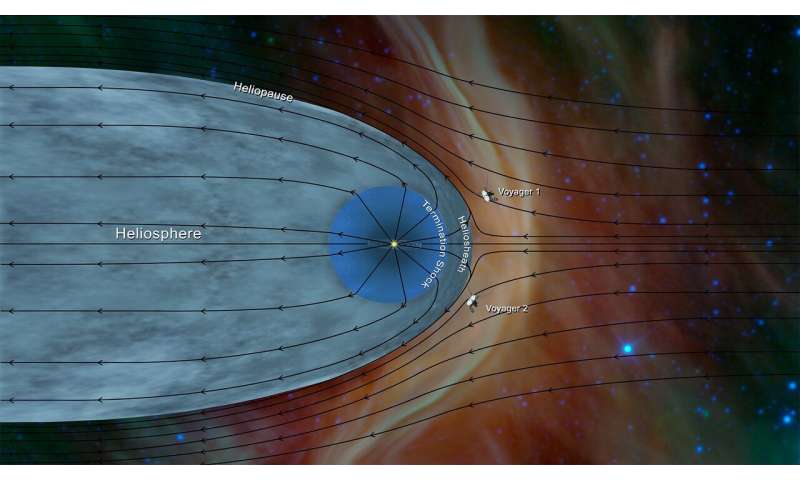Best of Last Week: Voyager 2 reaches interstellar space, Siri's laser weakness, and human disease killed the Neanderthal

It was a good week for space news, as a team at the University of Iowa announced that Voyager 2 has reached interstellar space—in addition to confirming that the craft has moved into the interstellar medium, they also detected a plasma density jump. Also, an international team of researchers further refined how quickly the universe is expanding using state-of-the-art technologies and techniques. And a trio of researchers with the University of Manchester, Università di Roma "La Sapienza' and Sorbonne University claimed that data from the Planck space observatory suggests that the universe is a sphere—Eleonora Di Valentino, Alessandro Melchiorri and Joseph Silk reported that they had found a discrepancy between the concentration of dark matter and dark energy and outward expansion; there was more gravitational lensing than theory has predicted.
In technology news, the team behind the development of The Bloodhound LSR jet car project announced that the car's 461-mph speed was high, but the team is eyeing bigger records ahead after breaking the land speed record on a dry lake bed in Africa. Also, a pair of researchers at the University of Notre Dame developed a model to predict the size and shape of online comment threads—the DARPA-funded project was carried out by Tim Weninger and Rachel Krohn. And a combined team of researchers from the University of Michigan and The University of Electro-Communications described a scenario in which light is a thief that tells your garage door to open—they also found that light from a laser could be used to send what are normally voice commands to devices like Alexa and Siri. Also, a small team of researchers from the University of Edinburgh, the University of Cambridge, Campus Universita´rio de Santiago and Leiden University found they could solve the three-body problem faster using a deep neural network—the team reports a new way to calculate where three bodies such as the sun, moon and Earth will all be at a certain point in time.
In other news, a team with members affiliated with institutions in the U.S. and Israel found evidence linking Neanderthal extinction to human diseases using mathematical models of disease transmission and gene flow. Also, a study sponsored by the University of Pennsylvania, the Parker Institute for Cancer Immunotherapy and biotech company, Tmunity Therapeutics announced that they had used the CRISPR gene editing technique for cancer—a first in the US.
And finally, if you, like millions of other people around the world, want to increase your chances of staying alive, a team of researchers from Australia, Thailand and Finland found that any amount of running could be linked to a significantly lower risk of death.
© 2019 Science X Network